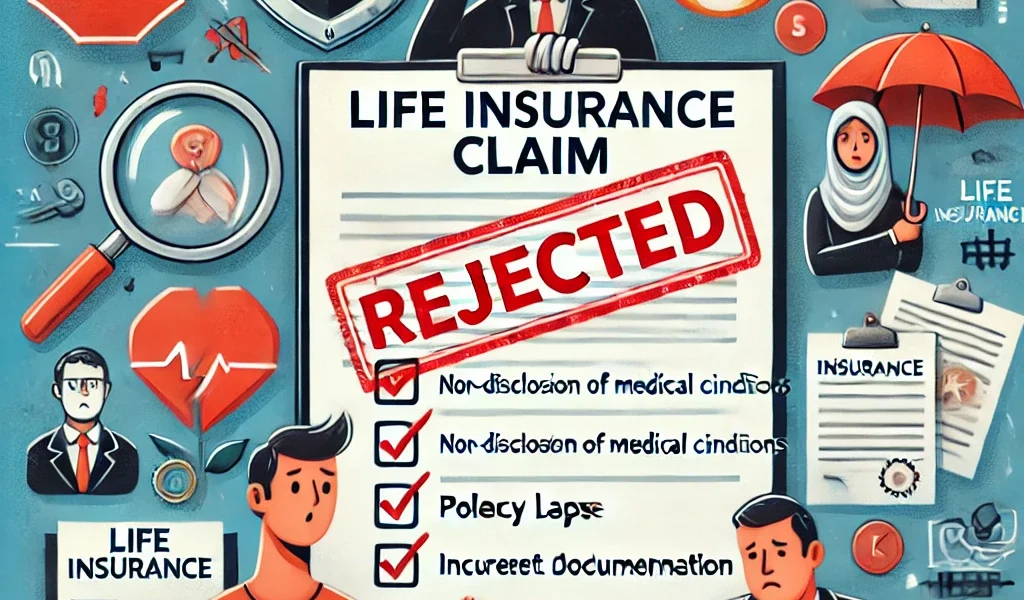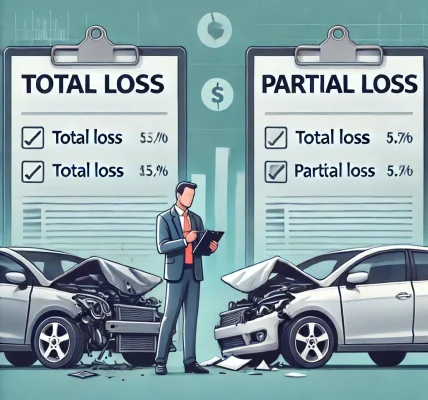Life insurance is a crucial financial safety net that provides financial support to beneficiaries in the event of the policyholder’s death. However, not all life insurance claims are approved. Claim rejections can be devastating for families who rely on this financial aid. Understanding why life insurance claims get rejected and how to prevent these issues can save beneficiaries from unnecessary stress and financial difficulties.
In this guide, we will explore the top reasons life insurance claims get rejected and practical steps to ensure smooth claim approval.
1. Non-Disclosure or Misrepresentation of Information
Why It Leads to Rejection:
One of the most common reasons for claim rejection is providing false or incomplete information during the policy application process. Insurance companies require accurate details about the policyholder’s health, lifestyle, and financial status.
How to Avoid This Issue:
- Always provide truthful and complete information about medical history, habits (such as smoking or alcohol consumption), and pre-existing conditions.
- Disclose high-risk occupations or hobbies (e.g., skydiving, racing, deep-sea diving).
- Regularly review and update policy information if circumstances change.
2. Non-Payment of Premiums
Why It Leads to Rejection:
If the policyholder fails to pay premiums on time, the policy may lapse, making it invalid when a claim is filed.
How to Avoid This Issue:
- Set up automatic premium payments to avoid missed payments.
- Keep track of premium due dates and set reminders.
- If financial difficulties arise, discuss premium payment flexibility with the insurer before missing a payment.
3. Death During the Contestability Period
Why It Leads to Rejection:
Most life insurance policies have a contestability period, usually the first two years after policy issuance. If the policyholder dies within this period, the insurer has the right to review the application for any misrepresentation or fraud.
How to Avoid This Issue:
- Ensure complete transparency during the application process to prevent future claim disputes.
- Keep medical records updated and maintain good health practices to avoid unexpected issues during the contestability period.
4. Exclusions Listed in the Policy
Why It Leads to Rejection:
Life insurance policies often have exclusions, which are specific conditions under which a claim will not be paid. Common exclusions include suicide (within a specific timeframe), deaths due to hazardous activities, or deaths resulting from illegal activities.
How to Avoid This Issue:
- Carefully read and understand the policy’s terms and conditions, including exclusions.
- Avoid engaging in activities that might void the policy.
- If involved in risky activities, consider policies that specifically cover such situations.
5. Fraudulent Claims or False Documentation
Why It Leads to Rejection:
Insurance companies thoroughly investigate claims for potential fraud. If a claim is found to be fraudulent or based on false documentation, it will be denied.
How to Avoid This Issue:
- Submit only genuine and verified documents.
- Ensure all medical and death certificates are from authorized institutions.
- Cooperate with the insurance company during investigations.
6. Beneficiary Issues and Disputes
Why It Leads to Rejection:
If there are errors in naming beneficiaries, multiple claims from different beneficiaries, or legal disputes over the rightful recipient, the claim can be delayed or rejected.
How to Avoid This Issue:
- Clearly specify beneficiaries in the policy documents.
- Regularly update beneficiary information in case of marriage, divorce, or other changes.
- Inform family members about the policy details to avoid confusion.
7. Death Under Suspicious Circumstances
Why It Leads to Rejection:
If the policyholder’s death is under suspicious circumstances (e.g., unclear causes, foul play, or lack of proper medical documentation), the insurance company may conduct an in-depth investigation before approving the claim.
How to Avoid This Issue:
- Ensure proper documentation, including police reports (if applicable) and medical records.
- Work closely with the insurer and provide all necessary supporting documents promptly.
8. Incorrect or Incomplete Documentation
Why It Leads to Rejection:
Missing or incorrect documentation can delay or completely reject a claim.
How to Avoid This Issue:
- Ensure all required documents are complete and correctly filled.
- Keep multiple copies of important documents such as policy papers, medical records, and identity proofs.
- Seek assistance from the insurer or a financial advisor if unsure about documentation requirements.
9. Delay in Filing the Claim
Why It Leads to Rejection:
Most life insurance policies have a time limit for claim submission. A delay in filing can result in unnecessary complications.
How to Avoid This Issue:
- File the claim as soon as possible after the policyholder’s death.
- Ensure beneficiaries are aware of the claim process and necessary documents.
- Contact the insurer immediately to understand the filing procedure.
10. Policy Expiry or Invalid Coverage
Why It Leads to Rejection:
If the policyholder outlives a term life insurance policy and does not renew it, the coverage expires. Additionally, if the policyholder purchases the wrong type of policy, it may not cover certain situations.
How to Avoid This Issue:
- Choose a policy with the right term and renewal options.
- Convert term life insurance to whole life insurance if long-term coverage is needed.
- Review the policy regularly to ensure continued coverage.
How to Ensure a Smooth Life Insurance Claim Process?
To prevent claim rejection, follow these best practices:
- Be Honest and Transparent: Provide accurate information at the time of policy application.
- Pay Premiums on Time: Set up reminders or auto-debits to avoid policy lapse.
- Educate Beneficiaries: Ensure family members are aware of the policy and claim procedures.
- Keep Policy Documents Safe: Store insurance documents in an accessible and secure place.
- Consult an Advisor if Needed: Seek professional help if unclear about policy terms and conditions.
- Regularly Update Policy Information: Modify details like beneficiaries or address changes as needed.
Final Thoughts
Life insurance is a valuable financial tool that protects loved ones in difficult times. However, claim rejections can leave families in distress. By understanding the common reasons for claim denials and proactively taking steps to avoid them, policyholders and beneficiaries can ensure a smooth and hassle-free claim process.
This guide aims to provide general information to help policyholders and their beneficiaries navigate the claim process. Always check with your insurance provider for specific details related to your policy and claim requirements.
By following these preventive measures, you can ensure that your loved ones receive the financial support they deserve without legal complications or unexpected rejections.



